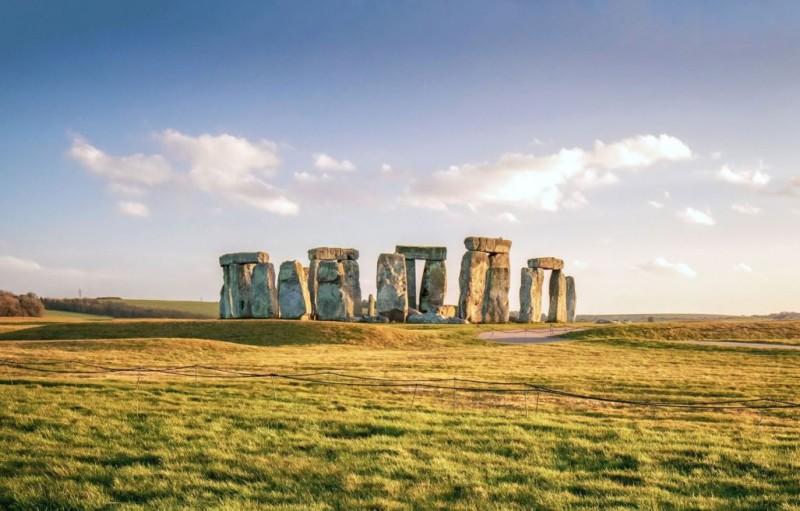
Stonehenge, a prehistoric monument located in England, has long fascinated archaeologists, historians, and visitors from around the world. Standing as a testament to the ingenuity and craftsmanship of ancient civilizations, Stonehenge continues to captivate our imaginations. In this article, we will explore the mysteries surrounding Stonehenge, delving into its purpose and the enigmatic process behind its construction.
1. Introduction
Stonehenge stands as an enigmatic monument, captivating our curiosity for centuries. Located on the Salisbury Plain in Wiltshire, England, it is composed of massive standing stones arranged in a circular pattern. The monument's construction dates back to the Neolithic period, approximately 2500 BCE, making it over 4,000 years old.
2. The Historical Significance of Stonehenge
Stonehenge holds immense historical significance, serving as a testament to the engineering capabilities of ancient civilizations. Its construction required careful planning, precision, and meticulous execution, showcasing the advanced knowledge possessed by its builders.
3. The Layout and Structure of Stonehenge
Stonehenge consists of two primary components: the outer circle and the inner horseshoe. The outer circle comprises large sarsen stones, some reaching up to 30 feet in height, with connecting lintels on top. Within this outer circle lies the inner horseshoe, constructed with smaller bluestones.
4. Theories about Stonehenge's Purpose
The purpose of Stonehenge has been a subject of intense speculation and debate among archaeologists and historians. Several theories have emerged to explain its function, including religious ceremonies, astronomical observations, healing rituals, and even as a burial site.
5. Construction Techniques and Challenges
The construction of Stonehenge was a monumental undertaking, considering the limited tools and resources available to ancient societies. The transportation and placement of the massive stones over long distances required ingenious engineering techniques and extensive manpower.
6. The Importance of Alignments
Stonehenge's precise alignments with celestial events, such as solstices and equinoxes, have fueled theories about its connection to ancient astronomy. These alignments suggest that Stonehenge may have served as a celestial calendar or observatory.
7. Stonehenge and the Solstices
During the summer and winter solstices, Stonehenge becomes the center of attention as thousands of visitors gather to witness the alignment of the stones with the rising or setting sun. The solstices hold cultural and symbolic significance, and Stonehenge's alignment adds to the intrigue surrounding the monument.
8. Stonehenge as a Burial Ground
The presence of human remains in and around Stonehenge has led some researchers to propose that it functioned as a burial ground. Excavations have uncovered cremated remains and other artifacts, hinting at Stonehenge's connection to rituals associated with death and the afterlife.
9. Stonehenge and Ancient Astronomy
Stonehenge's association with astronomy extends beyond solstice alignments. Some believe that its builders possessed advanced astronomical knowledge, which they incorporated into the design of the monument. This raises questions about the scientific and cultural achievements of ancient civilizations.
10. Theories on Stonehenge's Builders
Identifying the builders of Stonehenge has proven challenging due to the lack of written records from that era. Various theories attribute its construction to different ancient civilizations, including the Celts, Druids, and even extraterrestrial beings. The true origin of Stonehenge's builders remains elusive.
11. Stonehenge in Popular Culture
Stonehenge's mysterious aura has made it a popular subject in literature, movies, and other forms of media. Its iconic status has led to its inclusion in numerous fictional works, often depicting it as a site of magic, ancient rituals, or even as a gateway to other dimensions.
12. Stonehenge's Preservation and Visitor Experience
Preserving Stonehenge is essential for future generations to appreciate its historical and cultural significance. Efforts have been made to protect the monument and enhance the visitor experience, including the construction of a visitor center and the implementation of controlled access measures.
13. Unraveling the Mystery: Current Research and Discoveries
Continued research and excavations at Stonehenge have shed new light on its purpose and construction. Advances in technology, such as ground-penetrating radar and 3D imaging, have allowed archaeologists to uncover hidden features and gain a deeper understanding of the monument's complexities.
14. Conclusion
Stonehenge stands as a testament to the ingenuity and cultural significance of our ancient ancestors. Despite centuries of investigation, many aspects of Stonehenge remain shrouded in mystery, leaving room for speculation and ongoing research. Its allure as an archaeological wonder will continue to captivate the world for generations to come.
10 Must-Visit Places in Europe for an Unforgettable Journey